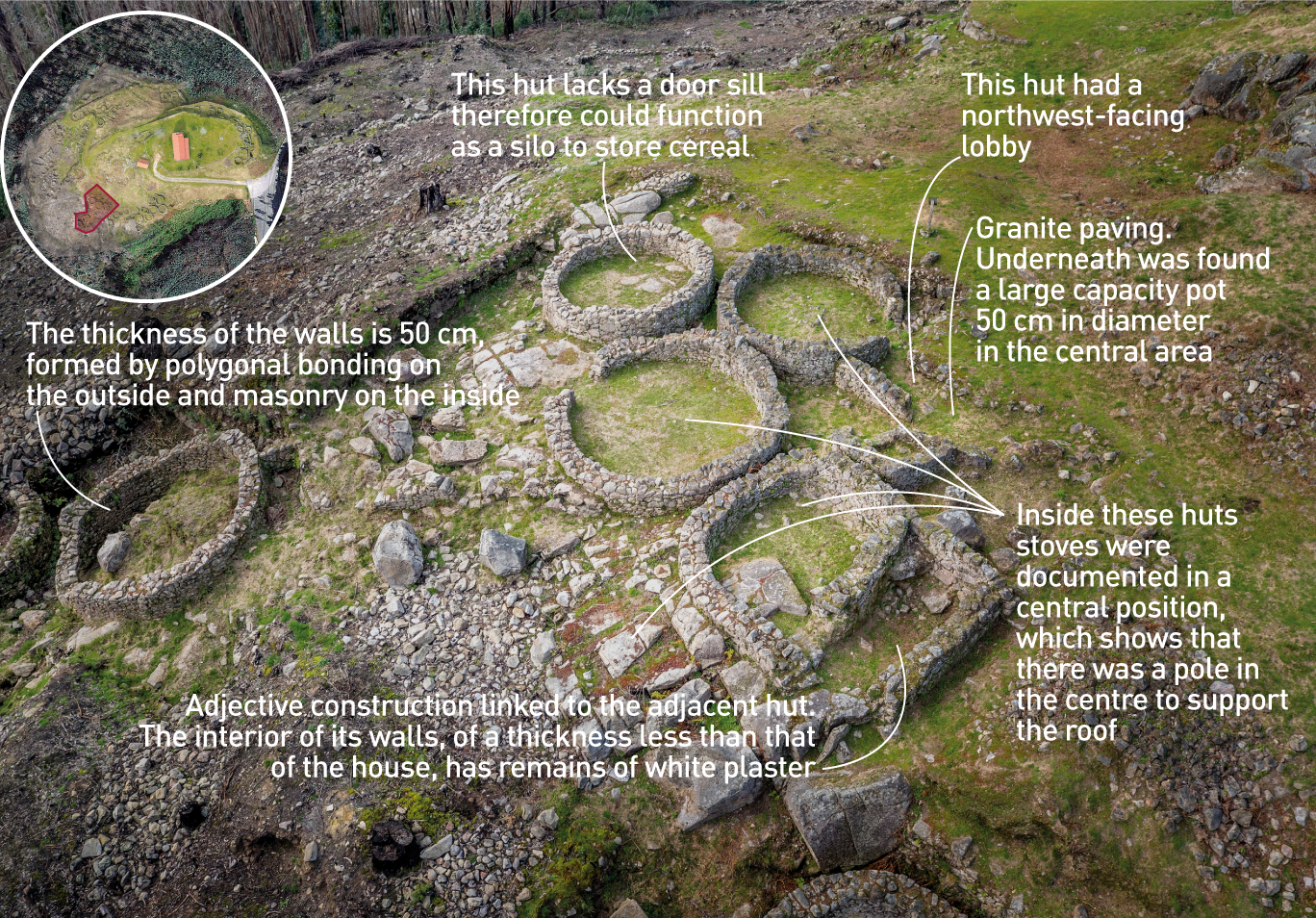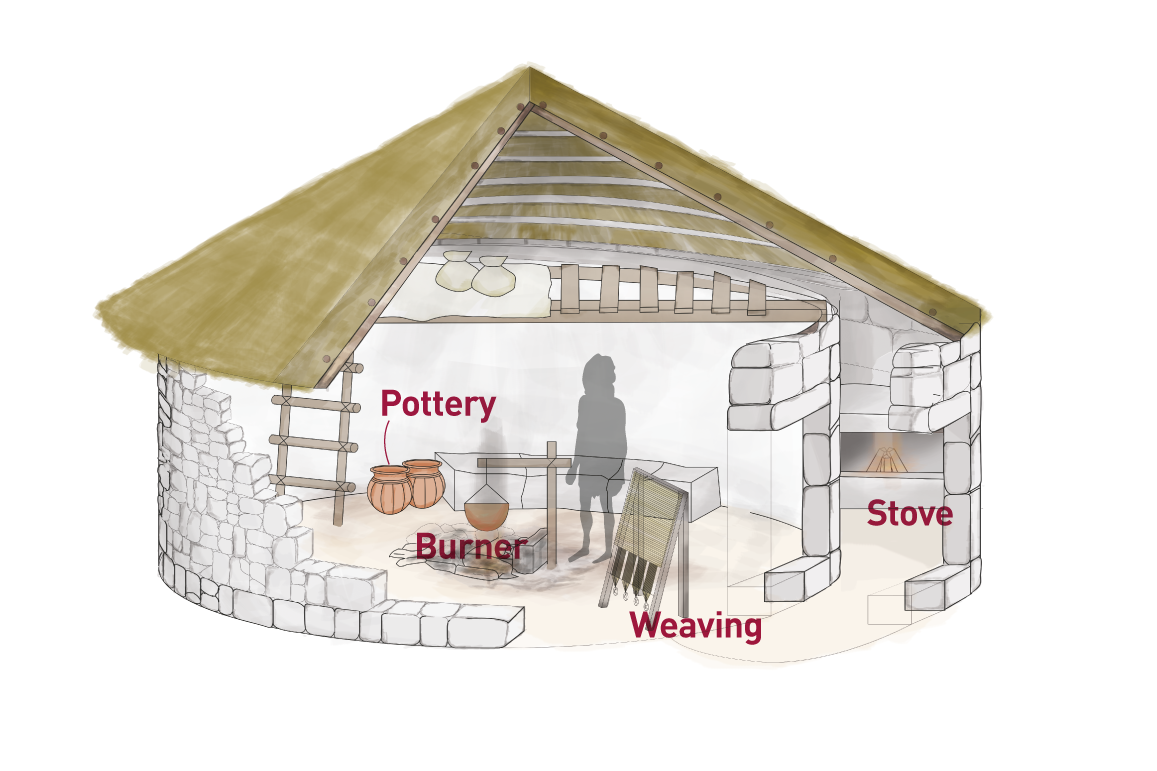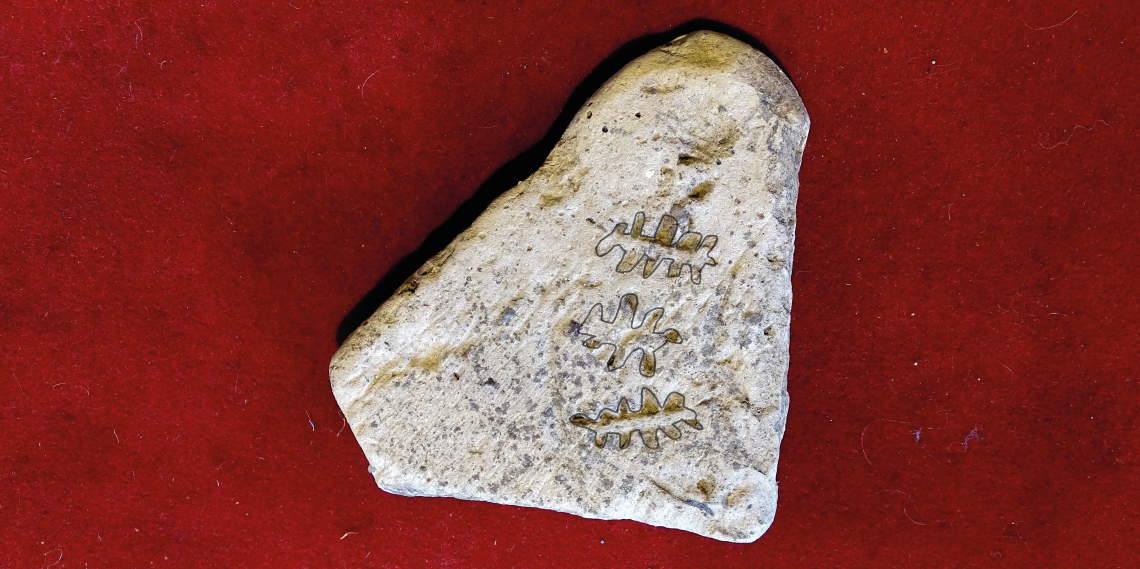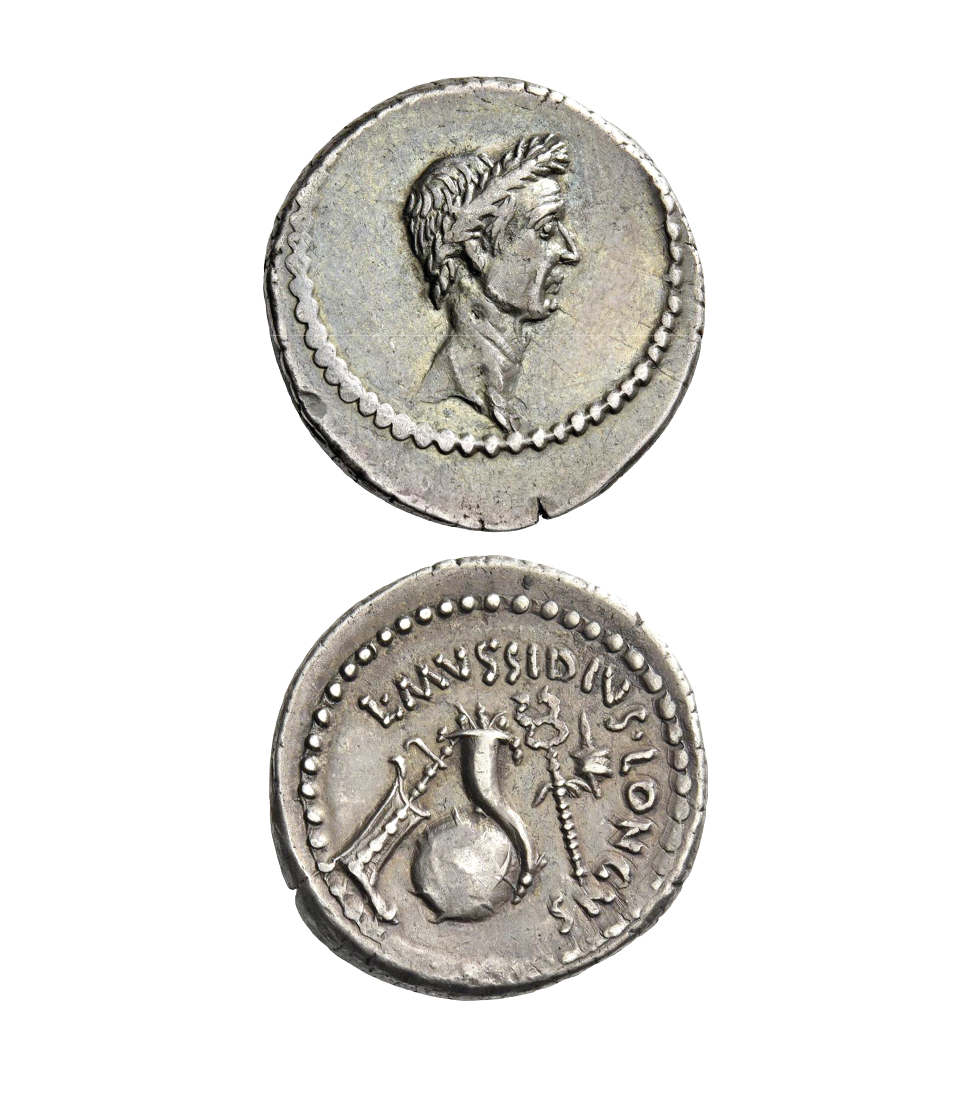
 To strengthen insulation the Gallaeci people used clay paving covered by boards of wood and bark.
The interior of the walls was plastered with lime.
This housing complex was occupied in the first century AD before it was abandoned. Three centuries later, back in the IV century AD, the whole site was partially rebuilt and reused.
To strengthen insulation the Gallaeci people used clay paving covered by boards of wood and bark.
The interior of the walls was plastered with lime.
This housing complex was occupied in the first century AD before it was abandoned. Three centuries later, back in the IV century AD, the whole site was partially rebuilt and reused.

In this area of the village appeared a Roman coin that corresponds to a silver denarius of Octavius Augustus or Caesar Augustus, the first Roman emperor, who held the throne between 27 BC y 14 AD. It was discovered on the floor of one of the circular huts, very close to the central stove. Although Troña is a sparsely Romanized fort, the appearance of Roman coins highlights the importance of commerce in this enclave, a settlement or central reference point for the other fortified villages of the region. During the last third of the II century BC Rome was constituted as an empire and endows with organizational structures common to all the territory it dominated.

Augusto carried out a reform of the monetary system that allowed payment with the same currency throughout the Empire, facilitating exchange and trade. In this context, currency became an instrument of social communication and propaganda in the service of the emperor. At the time of the late occupation of Troña (III century AD), the fort also coexisted with Roman villas, that is, with large agro-livestock farms, located at the bottom of the valley that were exploited by Galician – Roman citizens. At the fort a coin of the Republican of Musidius Longus (42-43 BC.) was found.